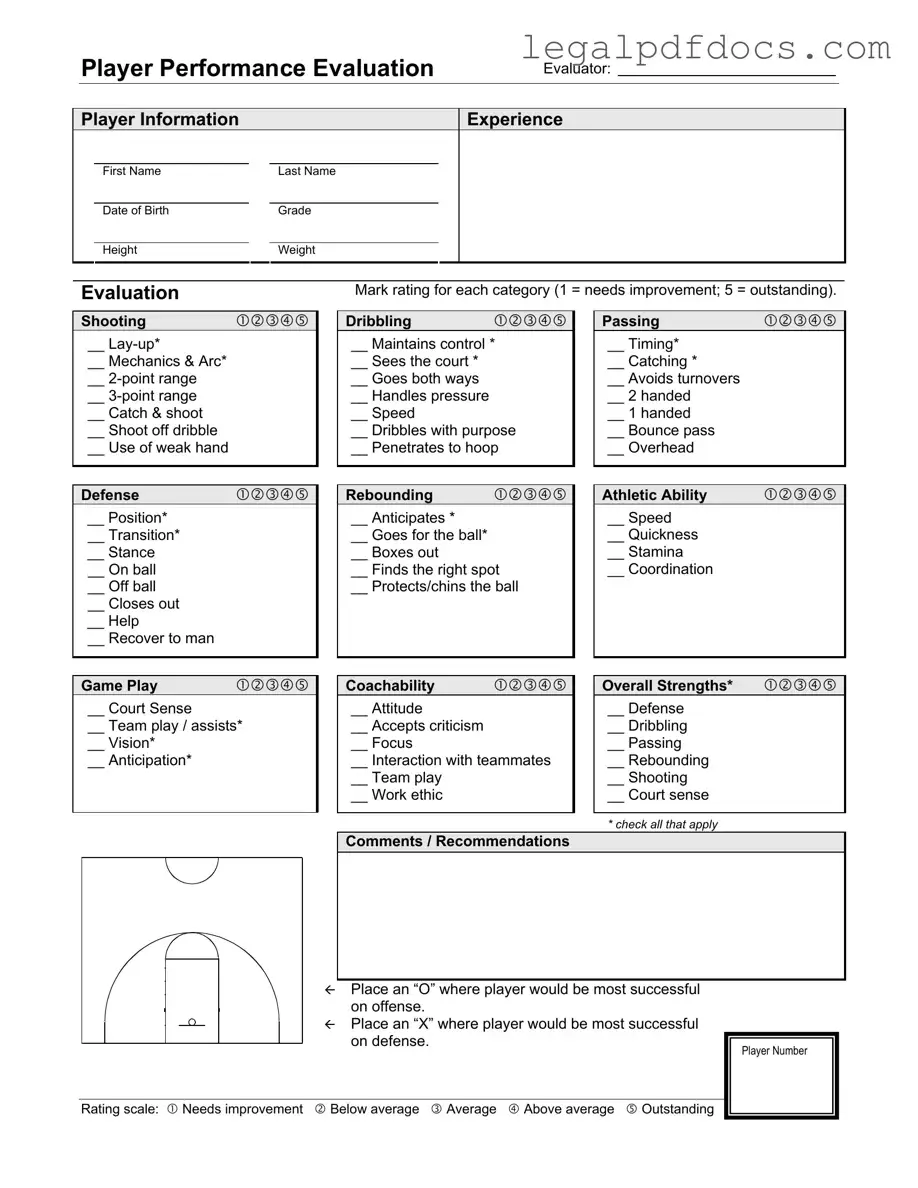The Basketball Evaluation form serves as a comprehensive tool designed to assess a player's skills and overall performance on the court. It encompasses various aspects of a player's abilities, including shooting, defense, dribbling, rebounding, passing, and athleticism. Evaluators are prompted to rate each category on a scale from one to five, where one signifies a need for improvement and five indicates outstanding performance. Additionally, the form provides space for evaluators to comment on a player's strengths and areas for development, offering insights into their game play and coachability. Specific sections highlight key skills such as shooting mechanics, defensive positioning, and passing techniques, allowing for a detailed analysis of the player's capabilities. Coaches can also mark where the player might excel offensively and defensively, further tailoring the evaluation to individual strengths. Ultimately, this form not only aids in identifying talent but also guides players in their development journey, ensuring they receive constructive feedback to enhance their game.
